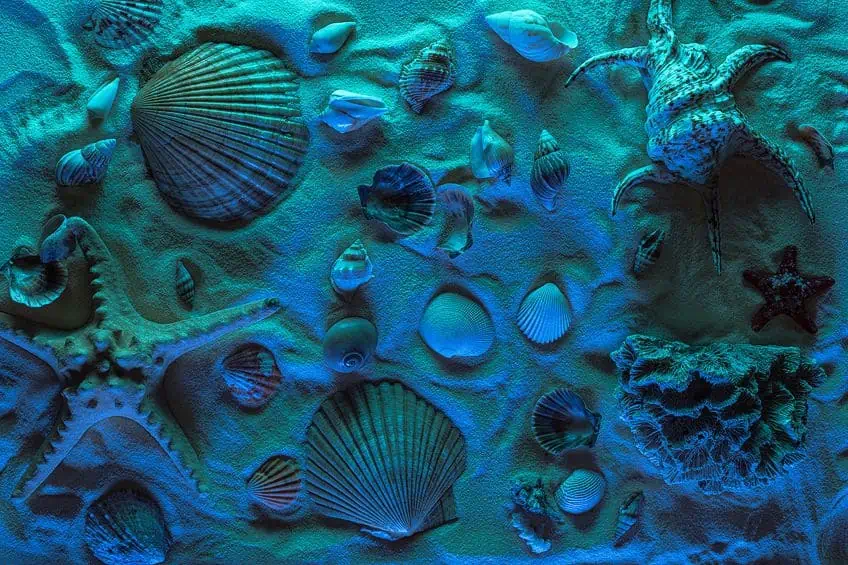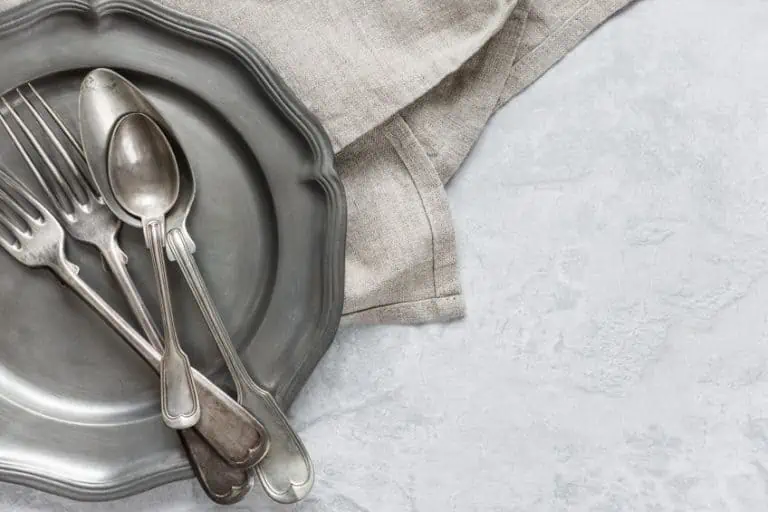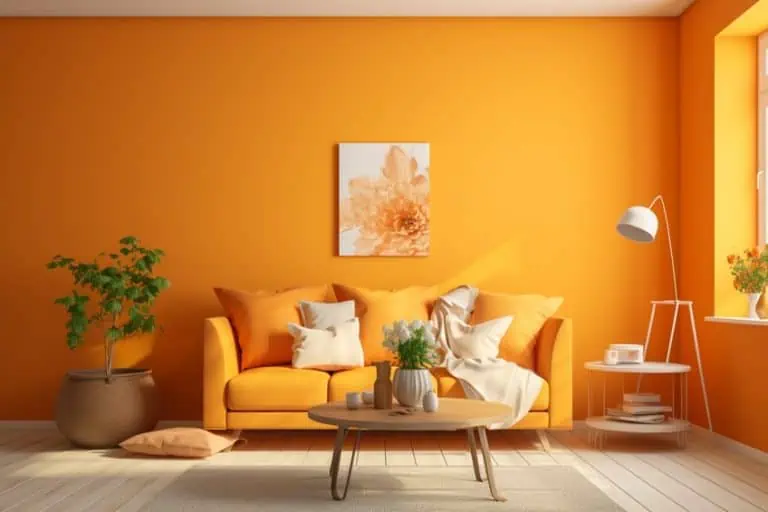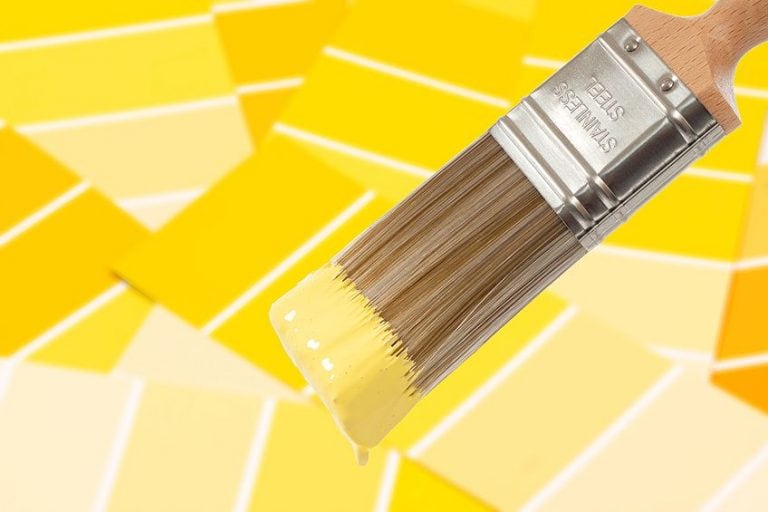Petrol Blue – Explore the Versatile and Calming Shades of Blue
This post may contain affiliate links. We may earn a small commission from purchases made through them, at no additional cost to you.
Petrol blue is a bold color that conjures feelings of relaxation, refreshment, and creativity. Although this color was only recently given a name, it can be seen throughout nature from the feathers of peacocks to the deep ocean. In this article, we explore how the petrol blue color is made, what colors go with petrol blue, as well as how to use it in your art and home.
Table of Contents
What Color Is Petrol Blue?
The petrol blue color can be described as a medium to dark blue with a deep greenish undertone. The color blue got its name relatively recently compared to the other primary and secondary colors we know today. The history of petrol blue is not well-known; however, it likely only got its name within the last century. There are many theories regarding the origin of the color’s name, the most likely is that it resembles the color of regular-grade 87 octane gasoline, which usually has a blue or green tint.
Other people have suggested that petrol blue refers to the blue of the petrel seabird and has merely been misspelled.
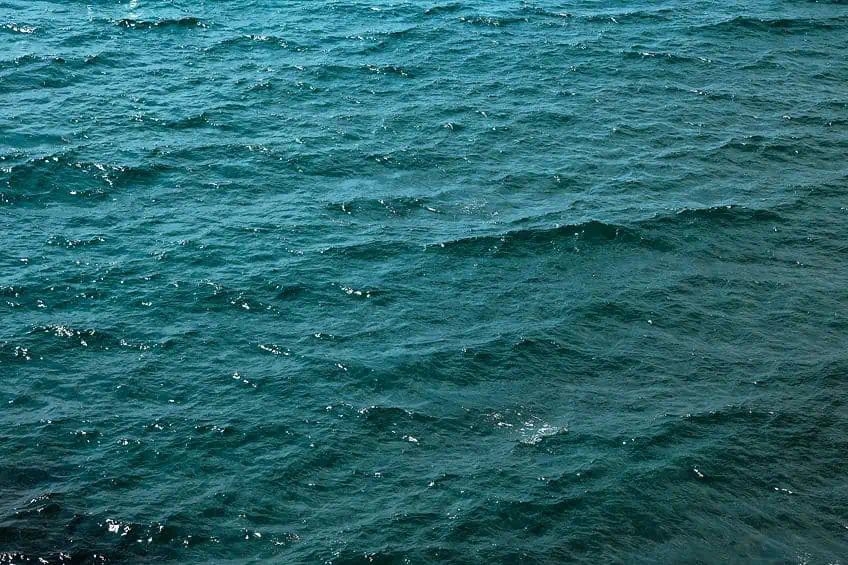
| Color Name | Color Hex Code | RGB Color Code | CMYK Color Code (%) | Color Shade |
| Petrol Blue | #005F6A | 0, 95, 106 | 100, 10, 0, 58 |
Psychology and Symbolism of Petrol Blue
The petrol blue color takes much of its symbolism and psychology from nature. This color is largely reminiscent of deep oceans and twilight skies and so is associated with calm and wisdom. The blue hue of this color inspires creativity and sophistication, while the small amount of yellow that gives it its green hue gives it a refreshing effect. This color of all is thought to bring good luck and a positivity that is reassuring rather than energizing.
Famous Paintings Using Petrol Blue
There are many instances of petrol blue being used in famous paintings throughout history. The blue and green hues of this color give it great versatility, which allows it to be used in a variety of ways including in landscapes and shading.
Blue Water Lilies (1919) by Claude Monet
| Artist | Claude Monet (1840 – 1926) |
| Date Created | 1916 – 1919 |
| Medium | Oil paint on canvas |
| Dimensions (cm) | 200 x 200 |
| Current Location | Musée d’Orsay, Paris, France |
Claude Monet made extensive use of the petrol blue color throughout his Water Lilies series (1920 – 1926). This series consisted of around 250 oil paintings of various scenes depicting his garden, in which petrol blue was used to color plants and bodies of water, as well as to create shadows. One of the most prominent examples in this series is the oil painting Blue Water Lilies (1919).
 Blue Water Lilies (1919) by Claude Monet; Claude Monet, Public domain, via Wikimedia Commons
Blue Water Lilies (1919) by Claude Monet; Claude Monet, Public domain, via Wikimedia Commons
Evening Landscape with Rising Moon (1889) by Vincent van Gogh
| Artist | Vincent van Gogh (1853 – 1890) |
| Date Created | 1889 |
| Medium | Oil paint on canvas |
| Dimensions (cm) | 92 x 72 |
| Current Location | Kröller-Müller Museum, Otterlo, Netherlands |
Van Gogh is another famous painter that made use of petrol blue in various works. Evening Landscape with Rising Moon (1889) is a great example of how this color can be used to create depth within a painting. In this painting, the petrol blue color serves as the perfect mid-ground color for the hills as it connects the warm tones of the wheat field in the foreground to the distant cool tones of the terrain in the background.
 Evening Landscape with Rising Moon (1889) by Vincent van Gogh; Vincent van Gogh, Public domain, via Wikimedia Commons
Evening Landscape with Rising Moon (1889) by Vincent van Gogh; Vincent van Gogh, Public domain, via Wikimedia Commons
What Colors Make Petrol Blue?
Because of all the versatility petrol blue has to offer, you might be wondering how to create it. To mix this color it is useful to understand the basics of color theory and color temperature to create the perfect shade.
Basic Color Theory
All colors are created from three colors known as the primary colors. These colors include red, blue, and yellow, which can be further mixed to make the secondary colors green, violet, and orange. A color wheel is a great tool for helping you to visualize the primary and secondary colors as well as the different relationships between them.
Colors that are found across from one another on the wheel are commonly known as complementary colors and will create a dark brown when mixed together.
How to Mix a Petrol Blue Color Yourself
Although petrol blue has both blue and green undertones, you do not make it by adding the two colors together. Rather, start with blue and then slowly add its complementary color, orange. This will create a grayish blue color that is tinted with green also known as petrol green. For the best results, use a cool tone orange, which contains slightly more yellow than red.
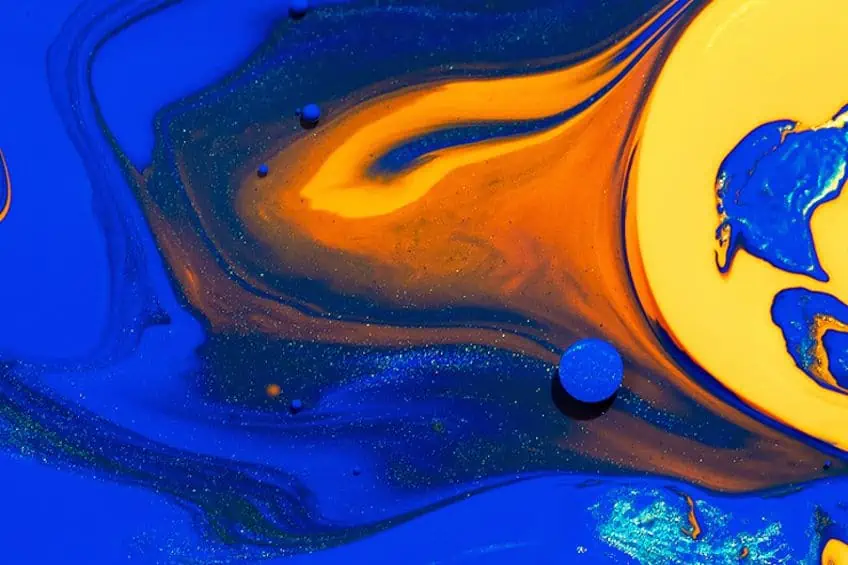
| Color Name | Color Hex Code | RGB Color Code | CMYK Color Code (%) | Color Shade |
| Petrol Blue | #005F6A | 0, 95, 106 | 100, 10, 0, 58 |
Warm and Cold Petrol Blue Colors
You can easily alter the relative color temperature of your petrol blue to make it appear warmer or cooler. Green contains yellow, which is a warm color, therefore adding green will produce a warm petrol blue color similar to dark teal or a sea green. A cool petrol green can be made by adding more blue to the color and this will make it more navy in color.

| Color Name | Color Hex Code | RGB Color Code | CMYK Color Code (%) | Color Shade |
| Warm Petrol Blue | #006A5F | 0, 106, 95 | 100, 0, 10, 58 | |
| Cool Petrol Blue | #004C6A | 0, 76, 106 | 100, 28, 0, 58 |
Petrol Blue Shades, Tones, and Tints
Petrol blue has an array of shades, tones, and tints that can be created by altering the proportions of the colors used to make it or by adding neutrals. Neutral colors include white, black, and gray and have various effects when added to petrol blue. Adding orange or black will create petrol blue shades, which give the color a deeper and darker feel as well as have a warming effect. Be sure to only add small amounts at a time as this can quickly turn your petrol blue into a murky brown if you use too much.
Light petrol blue tints are created by adding white to your color. This will brighten your petrol blue, making it appear similar to steel blue.
Adding white will also cool the color but can also wash it out if too much is added. Lastly, adding gray to petrol blue will produce a tone of the color that is more muted and has reduced luminescence. This is handy if you are looking for a softer color but can also turn completely gray if too much is added.

| Color Name | Color Hex Code | RGB Color Code | CMYK Color Code (%) | Color Shade |
| Dark Petrol Blue | #01424a | 1, 66, 74 | 99, 100, 0, 71 | |
| Light Petrol Blue | #4e939c | 78, 147, 156 | 50, 6, 0, 39 | |
| Muted Petrol Blue | #2a5d63 | 42, 93, 99 | 58, 6, 0, 61 |
What Colors Go With Petrol Blue?
Different color schemes can give petrol blue different effects from brightening to deepening. Color palettes can be created using many methods; however, the easiest way is to use color theory. Using color theory and the color wheel we can easily visualize the hues that will best accompany petrol blue and combine them into color palettes. Complementary, analogous, triadic, and monochromatic are four of the most popular color schemes that can be constructed using color theory and the color wheel. Each of them offers different amounts of balance and contrast while remaining aesthetically pleasing and visually interesting.
Below we have compiled various color schemes that use petrol blue to showcase the versatility of this color and inspire you to create your own color schemes to use in your home and art.
Complementary Petrol Blue Color Palette
Complementary color palettes are some of the most popular color palettes because of the brilliant contrast they produce. These color schemes incorporate two opposite colors on the color chart, which makes both colors appear more vibrant. In our color scheme, petrol blue is contrasted with a reddish orange to create a bold and moody feeling.
Pale gold is included to lift the color scheme so that it does not feel too dark and drab.

| Color Name | Color Hex Code | RGB Color Code | CMYK Color Code (%) | Color Shade |
| Petrol Blue | #005F6A | 0, 95, 106 | 100, 10, 0, 58 | |
| Dark Teal | #1C2725 | 28, 39, 37 | 28, 0, 5, 85 | |
| Rufous | #B52512 | 181, 37, 18 | 0, 80, 90, 29 | |
| Coral | #E86741 | 232, 104, 65 | 0, 55, 72, 9 | |
| Pale Gold | #FCE6AC | 252, 231, 172 | 0, 8, 32, 1 |
Analogous Petrol Blue Color Palette
Analogous color schemes combine the harmony of a monochromatic color scheme with the contrast of a complementary color scheme to produce a color palette that is balanced and interesting. It does this by incorporating three adjoining colors on the color wheel. Our color palette looks to nature for inspiration, with the various greens and blues being reminiscent of peacock feathers, deep sea, and verdant hills.
The mixture of light and dark hues provides contrast while remaining calm and relaxing.

| Color Name | Color Hex Code | RGB Color Code | CMYK Color Code (%) | Color Shade |
| Petrol Blue | #005F6A | 0, 95, 106 | 100, 10, 0, 58 | |
| Dark Gray Blue | #2A393F | 42, 57, 63 | 33, 10, 0, 75 | |
| Dark Green | #0B5D37 | 11, 93, 55 | 88, 0, 41, 64 | |
| Sage | #6CA589 | 108, 165, 137 | 35, 0, 17, 35 | |
| Pistachio Green | #BEF3B8 | 190, 243, 184 | 22, 0, 24, 5 |
Triadic Petrol Blue Color Palette
Triadic color schemes offer huge amounts of contrast, while being much easier to balance compared to complementary color schemes. This color scheme incorporates three colors that are equal distance from each other, which is what gives it its great balance. Our color scheme uses yellow and coral alongside petrol blue to create a youthful and playful color palette.
Rose gold and teal are also included for some extra contrast and balance.

| Color Name | Color Hex Code | RGB Color Code | CMYK Color Code (%) | Color Shade |
| Petrol Blue | #005F6A | 0, 95, 106 | 100, 10, 0, 58 | |
| Saffron Yellow | #F4C84B | 244, 199, 75 | 0, 18, 69, 4 | |
| Teal | #249D8C | 36, 157, 141 | 77, 0, 10, 38 | |
| Light Coral | #E77D67 | 231, 124, 103 | 0, 46, 55, 9 | |
| Rose Gold | #F1E1D2 | 241, 225, 210 | 0, 7, 13, 5 |
Monochromatic Petrol Blue Color Palette
Monochromatic color schemes offer the least amount of contrast and are the easiest to balance. These color palettes use various shades, tones, and tints of a single color for soft contrast. Our color palette has a darker peacock as well as a lighter steel and powder blue to compliment the petrol blue and give it a cool and industrial feel.

| Color Name | Color Hex Code | RGB Color Code | CMYK Color Code (%) | Color Shade |
| Petrol Blue | #005F6A | 0, 95, 106 | 100, 10, 0, 58 | |
| Peacock | #002D30 | 0, 45, 48 | 100, 6, 0, 81 | |
| Dark Sea Foam Green | #6CA094 | 108, 160, 148 | 32,0, 7, 37 | |
| Steel Blue | #658C93 | 101, 140, 147 | 31, 5, 0, 42 | |
| Powder Blue | #C3E5E6 | 195, 229, 230 | 15, 0, 0, 10 |
Petrol Blue in Design
Petrol blue is a great color to use in your home. This bold color can be paired with reds and oranges to give rooms a deep and cozy atmosphere or softened with pastels and neutrals to produce a more delicate feel. Petrol blue is most commonly used as a wall color in the form of paint, paneling, or wallpaper, for either the whole room or as a feature wall. However, this color can also be used as an accent color alongside warmer hues to provide soft contrast, or in a piece of statement furniture like a sofa or headboard.
Petrol blue can be used throughout your home, although its calming effect may be best suited to rooms that are used to decompress and relax. Bathrooms and bedrooms are excellent choices for this color especially, however, offices are also a great option to help keep a cool head throughout a stressful day.

Whether you are using petrol blue color schemes in your art or your home, color balancing is important. The 60:30:10 rule is a great tool to help you balance your color scheme when you are starting out and involves choosing one or two colors as your main color and using it in 60 percent of your work. You can then balance these main colors by using a secondary color in 30 percent of your work and the remaining 10 percent is made up of accent colors, which can be used to highlight features.
Petrol blue is a highly versatile color that can have many impacts on your art and space. By knowing how to create and alter this color, as well as how to contrast and complement it, you will be able to easily incorporate it into any color palette and make use of its calming positivity!
Frequently Asked Questions
What Colors Make Petrol Blue?
Petrol blue is made of a mixture of blue and orange. To create a petrol blue, start with a cool blue, such as Phthalo Blue or Winsor Blue, and slowly add a small amount of a cool orange which has yellow undertones. This will darken the blue while giving it a green tinge.
What Color Is Petrol Blue?
Petrol blue is a dark blue color with a green tint, which resembles regular-grade 87 octane gasoline.
What Colors Go With Petrol Blue?
A reddish orange is complementary to petrol blue as it contrasts nicely, while greens and bluish purples are analogous and add balance. Tints and shades of petrol blue can also be used together to produce a monochromatic color palette.
Megan is a writer and researcher who graduated from the University of Cape Town with a degree in Social Sciences, specializing in Psychology and Environmental Science. Her passion for knowledge and leaving a positive impact has fueled her current work in conscious and sustainable growth in Southern Africa. Megan’s love of nature has also led her to train as an animal behaviorist. She works part-time training and rehabilitating dogs. Megan is interested in the physical and psychological effects of colors in our environment on our mood and well-being. In addition, she is concerned with how art and creativity have been an integral part of human society. Megan van Schoor has been writing blog posts on the topics of painting, drawing, and color theory for acrylgiessen since 2021.
Learn more about Megan van Schoor and about us.
